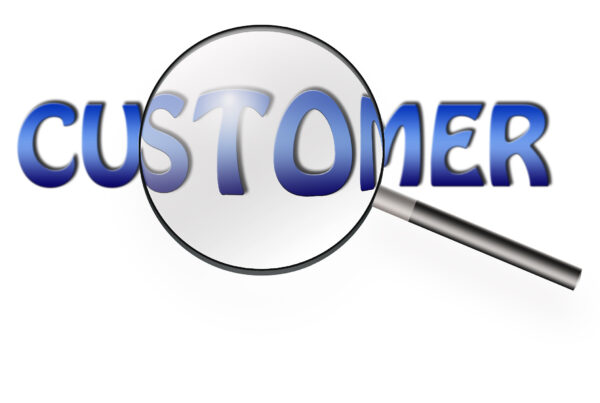
It has never been more urgent for utilities to understand their customers in vivid detail to unlock the full potential of programs and portfolios.
Electric utilities have seen a large increase in low-to-moderate income (LMI) and small-and-medium-sized business (SMB) customers struggling to pay their bills. In fact, the National Energy Director’s Association estimates that by March 2021, as a result of the COVID-19 pandemic, ratepayers nationwide could owe $35-40 billion to their utilities, with double-digit increases in the number of residential and SMB customers in arrears of over 60 and 90 days.
That’s a lot of money, a lot of delinquent accounts, and a lot of manpower needed to manage a difficult-to-manage situation. Yet while it is easy to get caught up in these big numbers, the most important number for solving the problem is one of the smallest.
The number one.
It has never been more urgent for utilities to understand their customers in vivid detail – as an audience of one – not only to better engage and service them, but to unlock the full potential of programs and portfolios. Now, due to advances in processing advanced metering infrastructure (AMI) data at scale, data science, and machine learning, doing so is more attainable and practical than ever.
Big Bucket, Big Mistake
The majority of residential account holders in arrears fall into the low-to-moderate-income (LMI) bracket. And in business, that distinction goes to small-and-medium-sized businesses (SMBs), which have been particularly ravaged by COVID. Unfortunately, that’s about as deep as most utilities go. The “LMI” or “SMB” box gets checked and a generic, templated response kicks in.
This kind of thinking creates problems. Make no mistake, the LMI and SMB groups are two of the most difficult to serve effectively in any circumstances. When utilities fall into the trap of thinking every customer in a particular category behaves alike, and therefore must be treated the same, customer satisfaction and program results suffer. Instead of starting with a premise of homogeneity, do the opposite: recognize that every customer in the macro category is an individual, then find commonalities from there.
For example, is the customer a serial late payer – someone who never pays on time even in the best of times – or is this someone who had been paying on time until March 2020 and now isn’t? Is this someone paying late or not at all because they are abusing the moratorium on power shut offs, or are they truly in need?
Perhaps this is a customer who would pay on time if they received their bill earlier in the month before they pay their other service providers? Or maybe they would benefit from e-billing, auto pay, pay as you go, or fixed/capped services?
Data Sciences Delivers Deeper Customer Insights
For utilities seeking to help distressed customers and deepen their reputations as leaders and pillars of their communities, this kind of knowledge is gold. It can make identifying and directing remedies to those most vulnerable quicker and easier. It also opens the door to a bigger change: the opportunity to fundamentally transform how the utility industry serves its most vulnerable customers today and in the future.
How can utilities better understand and engage with their thousands, hundreds of thousands, or even millions of individual “audiences of one”? At E Source, we are starting by building a double, a ‘digital replica’ of each of a utility’s customers. Building this replica draws on everything from the customer’s account history with the utility to the rich array of publicly available data about them. This isn’t just D&B data; instead it spans demographic, behavioral, lifestyle & interest, financial, and structural data to help paint a very granular, household-level snapshot of every utility customer.
Additionally, we layer in AMI data to understand a customer’s energy usage over time for more dynamic and actionable analysis. Now when a utility sees anomalies in usage, dramatic changes in usage over time, or the beginnings of such change, it can simulate program fixes in the replica, using an AI-driven recommendations engine to select the best program option.
With this rich vein of customer-specific information, extending from hourly energy usage and payment history to hobbies and household expenses, utilities can begin to group their LMI and SMB customers according to common attributes that can lead to more informed and effective program offers. Then, by turbocharging their effort with machine learning, the results can be continually enhanced.
A Data Science Approach to COVID-driven Arrears
E-Source recently worked with utilities on COVID-related arrears initiatives using data science. First, we looked closely at the data – account history, demographic, and more – to understand customers at the granular level, model customers to find similarities in those going into arrears (i.e., propensity modeling and risk scoring), and match existing payment plans and bill-pay options with those customers who would be best served by them.
Next we created a feedback loop, powered by machine learning, to assess the results, constantly recalibrating the output – refining it – so the utility could engage in an even more nuanced way with its customers. As the algorithms continue to learn and improve over time based on real customer feedback and adoption rates, the utility increases its ability to make the right offer to the right customer at the right time with the right messaging.
For example, in one recent engagement, our “audience of one” data science approach enabled a utility to precisely identify high-risk segments that accounted for 65% of arrears from a customer population that comprised only 20% of its total customer base. Essentially, using our deep customer profiling tools, machine learning software, and data science approach, the utility gained a 3x lift from its prior “hunt-and-peck” arrears approach. Data science is helping utilities more efficiently find who is at risk, so they can focus more resources on how best to engage with their most vulnerable customers.
The Home Run
Today, propensity scoring – modeling customer behavior – is commonplace in our industry. What isn’t yet is using data science to take the next step.
Understanding the customer, the audience of one, is now possible. We can build upon that individual understanding to create better, more accurate categories or groupings of customers to whom programs can be best matched (and results generated).We can also use a digital replica of each customer to simulate the impact of various program offers to make personalized recommendations to cohorts of customers.
This approach can help identify at-risk arrears customers in a utility’s LMI and SMB base. It can also help utilities reach out to them with the right offer – or better yet, customize an even better one.
Single program optimization is just the beginning.
Utilities have many programs in their portfolios, and a data science-based approach to program and portfolio performance optimization could be a game changer. Instead of just offering that e-bill or auto-payment plan to an at risk customer, how about running the model to see if offering them an energy-efficiency program to lower their electricity bill in the first place might be welcome? Or how about a demand-response program to reduce their total cost of energy while creating a sense of ownership over their energy use? Maybe both?
With data science you can do it all and continually improve the result over time.
For more information, please visit E Source’s Data Science page HERE!
Tom Martin is Managing Director of Product for E Source Data Science.















